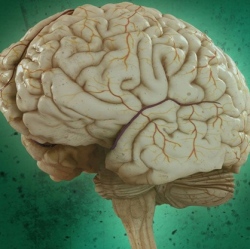
Two new fluorescent dyes attracted to cancer cells differentiate brain tumors from normal brain tissue in mice, and may help neurosurgeons more accurately localize and completely resect (remove) brain tumors, suggests an open-access study in the February issue of Neurosurgery.
The two “tumor-selective” fluorescent agents, called CLR1501 and CLR1502, were molecularly altered to carry fluorescent dyes that glow under lights with specific wavelengths, green (CLR1501) or near-infrared (CLR1502) range. Viewed under appropriate conditions, the dyes make tumor cells “light up” so that they can be readily distinguished from neighboring normal brain tissue.
Using different types of imaging technologies, John S. Kuo, M.D., and colleagues evaluated the ability of CLR1501 and CLR1502 to detect tumors in mice. The results were compared with imaging studies performed with a dye called 5-aminolevulinic acid (5-ALA), which glows under blue light. Although 5-ALA is used for fluorescence-guided neurosurgery in Europe, it is not yet approved for routine use in the United States.
The results showed that CLR1501 and CLR1502 were attracted to tumor cells, and emitted light of specific wavelengths under appropriate imaging conditions. Imaging with CLR1501 green dye showed fluorescence similar to that achieved with currently used 5-ALA dye. With the near-infrared CLR1502 dye, fluorescence was even greater than with 5-ALA. The use of near-infrared fluorescence would offer additional advantages during actual surgery, compared to fluorescence in the visible-light range.
